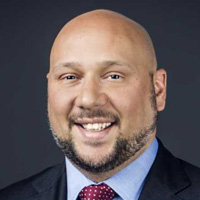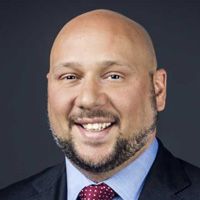I'm a Financial Planner: If You're Within 10 Years of Retiring, Do This Today
Don't want to run out of money in retirement? You need a complete retirement plan that accounts for income, market risk, taxes and more. Don't regret putting it off.

Many people planned their most recent vacation better than they're planning for retirement. That's because planning a vacation is fun. The numerous details involved in making sure you're fully prepared for retirement can be tedious and boring.
And if they have plenty of working years left, people think, What's the hurry?
Consequently, retirement planning is often a piecemeal process for those folks. Throughout their careers, they focus solely on the savings or investments aspect, leaving the other important parts of a plan for another day.
From just $107.88 $24.99 for Kiplinger Personal Finance
Become a smarter, better informed investor. Subscribe from just $107.88 $24.99, plus get up to 4 Special Issues

Sign up for Kiplinger’s Free Newsletters
Profit and prosper with the best of expert advice on investing, taxes, retirement, personal finance and more - straight to your e-mail.
Profit and prosper with the best of expert advice - straight to your e-mail.
Kiplinger's Adviser Intel, formerly known as Building Wealth, is a curated network of trusted financial professionals who share expert insights on wealth building and preservation. Contributors, including fiduciary financial planners, wealth managers, CEOs and attorneys, provide actionable advice about retirement planning, estate planning, tax strategies and more. Experts are invited to contribute and do not pay to be included, so you can trust their advice is honest and valuable.
But as you get closer to retirement — let's say within 10 years of your planned exit from the workforce — strategizing with a holistic approach and putting all the pieces together is vital to being properly prepared for the day you walk away.
By taking all the retirement elements into account, you can build a comprehensive, interconnected plan that brings you added peace heading into retirement.
Here are the factors to consider when constructing a well-rounded plan that can protect you in retirement.
Design a lifetime money map
How are you going to replace your paycheck when you retire?
People have achieved the pinnacle of their wealth while working, and now they start to spend it. That gets nerve-racking. They've been good with their money, saving and investing, and then they're just spending it.
It's a whole mindset shift. And unfortunately, many financial people never talk about it. People often work with financial professionals who don't do comprehensive planning but typically just handle investments.
To do well in retirement, you need to have a written year-by-year income plan. It's essentially a money map showing:
- How much money you have in different accounts
- How to create income streams — the accounts to pull from and when
- How to manage taxes every year
- Adjusting the plan for inflation
A key to developing your money map is reviewing all your monthly spending. Knowing your expenses while working provides clues to how much you might spend in retirement — when you have far more time to spend and less money coming in.
It also gives you ideas about what types of expenses to cut or reduce and helps you develop a budget mindset, which most people need in retirement.
Unfortunately, many people don't have a clear grasp of their expenses and don't take the time to investigate them. Out of the many people I've met with in the past year, maybe five were close to knowing how much they really spend each month.
To determine how much of your money you are spending, look at the total withdrawals on your bank statements over the last 12 months. I mean, look at everything you spent, from the mortgage to utility bills to entertainment and every miscellaneous item.
Many people make a ballpark estimate without looking at their statements. On average, the people I see are off by as much as 30% to 50% when they do that.
Extend that miscalculation over a 10- to 15-year period, and that's the difference between somebody living a great retirement and somebody having to go back to work or running out of money.
Reduce your market risk
Many people take too much risk. When drawing closer to retirement, it makes sense to start getting their investments aligned with the Rule of 100.
That's a formula for managing risk by gradually reducing exposure to stocks as you age. You subtract your age from 100 to calculate the percentage of your portfolio that should be invested in stocks. The remainder should be protected from market losses.
Following the Rule of 100, someone who is 60 years old would have 60% of their savings protected and the remaining 40% held in stocks. When you've got a paycheck coming in, you can ride through the ups and downs of the markets.
But when you don't have that paycheck anymore and you're starting to withdraw money, you are more vulnerable to market volatility.
In your working years, you're putting money into a 401(k) or other investment accounts when the market is high and when it's low. You might be dollar-cost averaging over time; that's an investment strategy where a fixed dollar amount is invested at regular intervals, regardless of the asset's price.
Looking for expert tips to grow and preserve your wealth? Sign up for Adviser Intel (formerly known as Building Wealth), our free, twice-weekly newsletter.
This means you buy more shares when prices are low and fewer when prices are high, potentially reducing the average cost per share over time.
Dollar-cost averaging can help reduce the risk of investing a large sum right before a market downturn, which can work out in people's favor.
But the opposite of that starts happening in retirement, when you've got to pull your money out monthly to cover expenses. Even when the market finishes up positive at the end of the year, it's negative at times during the year.
Trying to time the market is pointless. If the market has a downturn of 30%, 40% or 50% when you are in retirement, you don't have time to recover.
Review your tax exposure and manage it
According to an Employee Benefit Research Institute survey, almost half of the retirees sampled said they didn't understand how taxes would impact their retirement, and nearly 40% said the amount they are paying is either higher or lower than what they expected.
People who have 401(k)s or IRAs face potential tax hits when withdrawing money from these tax-deferred accounts in retirement. Required minimum distributions (RMDs) begin at age 73 (or 75 if you were born in 1960 or later).
That taxable income could push them into a higher tax bracket, especially when coupled with how much of their Social Security is taxable, which can trigger higher Medicare premiums.
When you're putting money away in your working years, are you putting it in the right places? Are you maximizing the tax-free accounts, such as the Roth 401(k) option?
People get really focused on rates of return, but in the ramp-up to retirement they need to consider the potential tax rate that they're going to pay when they make withdrawals in retirement.
Choose your best health care option
If you want to retire before 65, what are the health insurance plans to help you bridge the gap until you hit your Medicare age at 65? Some people continue working just for the employer-offered health insurance. But if you found another option, could you retire earlier?
The Affordable Care Act provides income-based subsidies, and every state has an exchange where individual or family health plans can be purchased.
COBRA can be expensive, unless your employer subsidizes your coverage temporarily as part of a severance package. If your spouse is still working, another option might be enrolling in that plan.
Once people hit Medicare age and are no longer covered by their employer's health insurance plan, they need a Medicare supplement plan and a prescription drug plan.
Medicare late-enrollment penalties can increase your monthly premiums if you don't sign up for Part A, Part B or Part D when you're first eligible. But you can delay enrolling in Part B and Part D without penalty if you have creditable coverage through your or your spouse's current employer.
The big costs that can hit people down the road are what Medicare usually doesn't cover, such as extended care in nursing homes, assisted-living facilities and in-home assistance.
Long-term care can be costly. You can use long-term care insurance to protect your assets (an even more important factor for those wanting to leave an inheritance), but premiums can be prohibitive.
On the plus side, long-term care insurance reduces the burden on family members to be caregivers, has potential tax advantages and enables the insured person to protect financial stability for a spouse.
The bottom line: You need a plan
When you see the retirement horizon a decade or less in the distance, it's time to get all the pieces of your plan in place so you can walk off into the sunset in peace. Putting it off for too long risks having a less satisfying retirement than you deserve.
Plan carefully and comprehensively to account for all the aspects of retirement living — and with the goal of living those hard-earned years to the fullest.
Dan Dunkin contributed to this article.
Appearances on Kiplinger.com were obtained through a paid PR program. The columnist received assistance from a public relations firm in preparing this piece for submission to Kiplinger.com. Kiplinger was not compensated in any way.
Bella Wealth Management, LLC ("Bella") is a registered investment adviser. For additional information about Bella, including its services and fees, send for the firm's disclosure brochure using the contact information contained herein or visit advisorinfo.sec.gov. Bella is under common ownership and control with Bella Advisors, Inc. a licensed insurance agency. This presentation refers to both Bella and Bella Advisors, Inc. but please note that they are two different entities that provide two different services. All investment adviser services including investment management and financial planning are provided by Bella. The information contained herein is based upon certain assumptions, theories and principles that do not completely or accurately reflect any one client situation or a whole exposition of the topic. All opinions or views reflect the judgment of the authors as of the publication date and are subject to change without notice. This communication contains information derived from third party sources. Although we believe these sources to be reliable, we make no representations as to their accuracy or completeness. This communication contains certain forward-looking statements that indicate future possibilities. Due to known and unknown risks, other uncertainties and factors, actual results may differ materially. Any hypothetical example is intended for illustrative purposes only and does not represent an actual client or an actual client's experience, but rather is meant to provide an example of the process and methodology.
Related Content
- Retirement Tax Bombs: How Roth Conversions May Cut the Blue Wire
- 12 Questions Retirees Often Get Wrong About Taxes in Retirement
- The 'Sequence of Returns' Risk Could Shrink Your Retirement Nest Egg
- 10 Strategies for Managing Financial Risk in Market Downturns
- How the IRS Taxes Retirement Income
Profit and prosper with the best of Kiplinger's advice on investing, taxes, retirement, personal finance and much more. Delivered daily. Enter your email in the box and click Sign Me Up.

Patrick Mueller, president of Bella Advisors, is a licensed investment adviser representative, an RFC (registered financial consultant) and co-author of "Dare to Succeed." He has passed the Series 65 securities exam and is a licensed insurance agent in Georgia, Alabama and Florida.
-
 4 Great Tools to DIY Your Own Financial Plan
4 Great Tools to DIY Your Own Financial PlanSmart Savings Several tools picked out by Kiplinger that DIYers can use to make their own financial plan.
-
 The 7-Month Deadline That Sets Your Lifetime Medicare Premiums
The 7-Month Deadline That Sets Your Lifetime Medicare PremiumsUnderstanding Medicare enrollment is crucial, as missing deadlines can lead to permanent late enrollment penalties and gaps in coverage.
-
 Retirees Living in Portugal: You Need a Post-NHR Tax Strategy
Retirees Living in Portugal: You Need a Post-NHR Tax StrategyWhen your 10-year Non-Habitual Resident tax break ends, you could see your tax rate soar. Take steps to plan for this change well before the NHR window closes.
-
 The 7-Month Deadline That Determines Your Lifetime Medicare Premiums
The 7-Month Deadline That Determines Your Lifetime Medicare PremiumsUnderstanding Medicare enrollment is crucial, as missing deadlines can lead to permanent late enrollment penalties and gaps in coverage.
-
 If You're a U.S. Retiree Living in Portugal, Your Tax Plan Needs a Post-NHR Strategy ASAP
If You're a U.S. Retiree Living in Portugal, Your Tax Plan Needs a Post-NHR Strategy ASAPWhen your 10-year Non-Habitual Resident tax break ends, you could see your tax rate soar. Take steps to plan for this change well before the NHR window closes.
-
 Could Target-Date Funds With Built-In Income Guarantees Be the Next Evolution in Retirement Planning?
Could Target-Date Funds With Built-In Income Guarantees Be the Next Evolution in Retirement Planning?With target-date funds falling short on income certainty, retirement plans should integrate guaranteed income solutions. Here is what participants can do.
-
 Stocks Chop as the Unemployment Rate Jumps: Stock Market Today
Stocks Chop as the Unemployment Rate Jumps: Stock Market TodayNovember job growth was stronger than expected, but sharp losses in October and a rising unemployment rate are worrying market participants.
-
 7 Ways to Plan Now to Save on Medicare IRMAA Surcharges Later
7 Ways to Plan Now to Save on Medicare IRMAA Surcharges LaterUnderstand the critical two-year lookback period and why aggressive planning before you enroll in Medicare is the most effective way to minimize IRMAA.
-
 The Delayed November Jobs Report Is Out. Here's What It Means for the Fed and Rate Cuts
The Delayed November Jobs Report Is Out. Here's What It Means for the Fed and Rate CutsThe November jobs report came in higher than expected, although it still shows plenty of signs of weakness in the labor market.
-
 The 'Best of Both Worlds' Rule of Retirement Spending
The 'Best of Both Worlds' Rule of Retirement SpendingIt's the 4% rule on steroids. Here's what it is and why it may work for you.
-
 Don't Let the Court Decide: Test Your Knowledge on Avoiding Probate
Don't Let the Court Decide: Test Your Knowledge on Avoiding ProbateQuiz Test your basic understanding of why having a estate plan is crucial to avoiding probate in our quick quiz.
